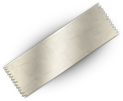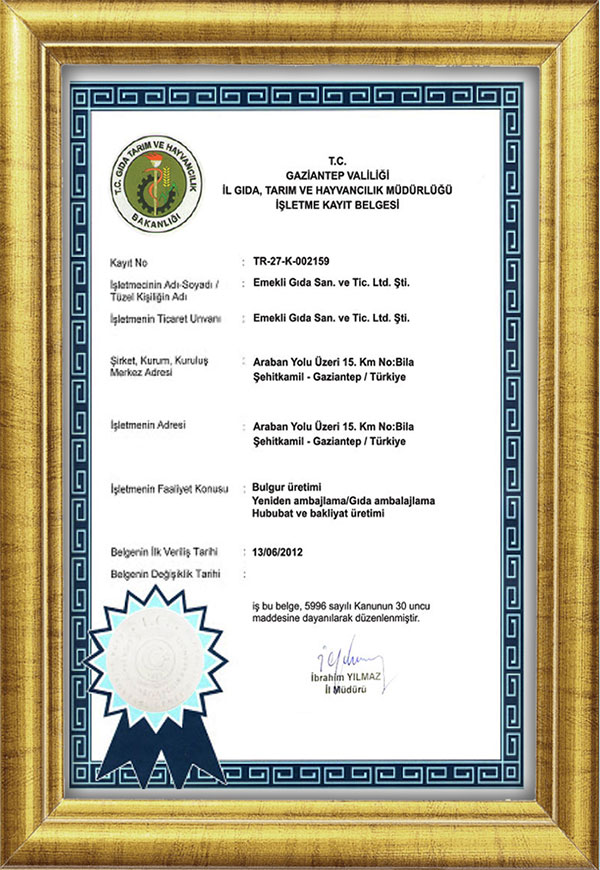About Us
"Since 1976"
Customer-oriented manufacturing good quality products from Gaziantep, Turkey and even the whole world
successfully carried out work for the country Retirement food with a longer first in Turkey
from grained pilaf bulgur, pilaf bulgur, meatball bulgur and meatball to brown special raw meatballs
In fact, with its different varieties of 20, from ascetic to firm, for 12 months,
offers a rich product portfolio with its production in its facilities.
In addition, all employee personnel, including retired senior managers who care about quality
He has received many trainings from hygiene to sanitation and these trainings and seminars are constantly
It is.
Manufacturing with an annual capacity of 500 tons, built on an area of 500 square meters in 1976 in Gaziantep
steps into the sector in the household, in 1987, the factory area of three thousand square meters and annual
Emekli Gıda, which has increased its capacity to a thousand tons, continues to strengthen its investments day by day.
It is. By 2000, it continues its production in 15000 square meters. Experience and
Supporting its translation with technology, the pensioner, which was 15000 square meters in 2004,
20 thousand tons per year at its five-storey integrated facility built on 3500 square meters of closed area.
Serving its valuable customers with the capacity of RETIRED, EMEKSAN, EMEK, SEÇKİN brands
continues to give.
With its success and dynamism, it has expanded its customer portfolio day by day.
Emekli Gıda, which is very meticulous about raw material wheat purchase, is the first choice for bulgur production.
First class of Southeastern and then Central Anatolia Regions
Durum (Triticum) realizes with wheat.
Besides the fact that the protein content of Hard Condition Wheat is high, the amount of starch is low.
The nitrogenous pigment substances in it are suitable for bulgur. Therefore retired all yellow
It uses hard durum wheat in bulgur production.
To produce customer oriented quality products based on Retirement Food Vision and consumer health, and
Our company, which determines to be a preferred brand in its sector,
To produce quality, healthy products in hygienic environment and to present them to customer satisfaction. quality
to produce products, to provide after-sales service, to provide coordination between units,
Our firm's retirement policies
is located between.

Definition and History of Bulgur
After the wheat is cleaned, baked and dried after a few processes, it is formed as a result of breaking the crust by removing it.
it is food. The feature of being a semi-cooked product is that it can be used for a long time. Its shelf life is quite long.
Bulgur, which has a history of 4000 years in Central Asia, Balkans and Middle East countries, is known as bugor, bulgur, blughour, burgul, brughoul in these regions.
It is known. In some countries, bulgur is also called as Golden Pilaf. Its production dates back to 40 century BC. Bulgur center dating back to 2000s
In the Middle East, Eastern Europe and Mesopotamia, spread to North America, Africa and Western European countries, and fabricated
started to be produced.
There are only two types of bulgur production techniques, other than these are non-essential naming. It is divided into two as Karaman and Antep methods.
Antep method has advantages and different features than Karaman method. The most important of these features is drying in the sun. Drying
process is carried out in a specially prepared area.
Features of Retired Bulgur
1- High nutritional value
2-Longer life than other legumes
3- Ease of preparation in the kitchen
4-Being dried in the sun
5- Long-lasting after cooking
6- Prevention of stomach and intestinal cancer due to fiber
7- Being resistant to heat and moisture
8- It can be easily stocked
9- Being cholesterol free
10- It does not contain pests and bacteria due to drying in the sun
11- Does not absorb radiation since its moisture content is low
During cooking, microorganisms and enzymes that cause food degradation are inactivated and biochemical reactions are stopped.
For this reason, the durability of bulgur increases. Bulgur, which has a glassy and hard structure, also gains an important resistance against pests.
With the end of biochemical rxv ‘breathing in bulgur, ie oxygen consumption has stopped, cabric heating will be prevented compared to wheat.
it will have a longer shelf life. The reason for the durability of bulgur is that it is dried in the sun.






